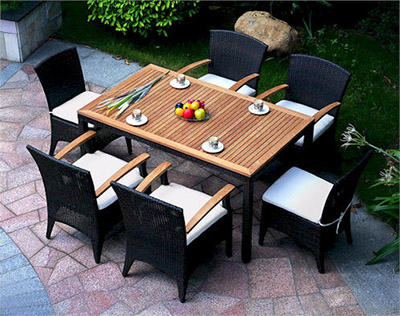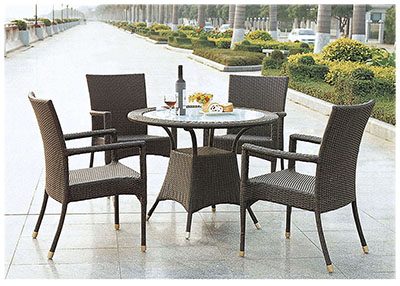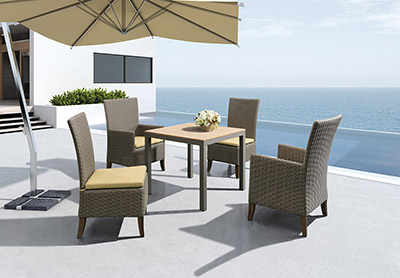1 The origin and development of packaging
The origin of packaging has been a long time. The origin of the packaging can be traced back tens of thousands of years ago. The primitive people used shells, gourd scoops to hold water, and used reed leaves, banana leaves, bamboo tubes, animal skins to wrap food and water, and used wild animal skins to carry articles. This is the bud of packaging. These primitive forms of packaging greatly facilitated the lives of people at that time and promoted the development of human beings and civilization. Some customs that use natural objects for packaging have remained in our country so far (such as packaging eggs with straw ropes and wrapping rice dumplings with bamboo leaves).
A major advance in the history of ancient packaging is the emergence of pottery. Pottery clay is processed by humans to change the original attributes, and it becomes a packaging container with new characteristics such as durability, antiseptic, and insect resistance, and thus it is produced and used in large amounts and gradually improved and beautified. The role of the original packaging is merely to accommodate items and to facilitate access. Until the human society has the commodity exchange and trade activities, the packaging has gradually become an integral part of the commodity.
With the development of productivity, the deepening of the social division of labor, the gradual increase in the number of categories of packaging, the increasingly exquisite forms, and more colorful packaging materials, including metal container packaging, paper packaging, ceramic container packaging, glass container packaging, as well as bamboo plants After the materials are processed, they are packaged, textiles are packaged, and serialized packaging emerged. Modern packaging appeared at the time of the European industrial revolution and has only been around for 200 years. In 1800, a wooden box made of machinery came out. In 1818, a tinned metal can was invented. In 1856, the British invented corrugated cardboard to pack light bulbs. In the late 19th century, a corrugated box for outer packaging was invented. These are all modern packaging. Development creates conditions.
Due to the improvement of production technology, a large number of products competed for the market, thus promoting the change of marketing methods. In order to enhance the competitiveness of commodities, packaging has changed the static characteristics of the previously purely stored items, took on a new historical mission, and played a role as a sales medium. It is increasingly showing its importance.
In the 1950s and 1960s, the popularization and development of international auto sales supermarkets enabled the packaging to flow from the original, safe protection of goods. The leap was to act as a silent salesperson, which directly stimulated the product packaging business. The rapid development of the packaging has given the packaging a new mission and connotation, making product packaging a powerful marketing weapon.
2 definition of packaging
Countries in the world have different understandings of the meanings of packaging, and the arguments are not the same, but the basic meaning is the same. The core function of packaging is the function.
1) Definition of foreign packaging
The American Packaging Association believes that: “Packaging is the use of appropriate materials, containers, and appropriate technologies to enable products to be safely delivered to their destination and implemented at the lowest cost for the transportation, distribution, storage and sale of goods. Preparations."
The Japanese Packaging Language Dictionary states that packaging uses appropriate materials and containers and applies technology to ensure that the product reaches its destination safely, even if the product maintains its contents and maintains its value during transportation and storage.
The Canadian Packaging Association believes that: Packaging is a tool or means to send products from suppliers to customers or consumers, and to maintain the integrity of the products.
The British Specification Association believes that: Packaging is an artistic, scientific and technical preparation for the storage, transportation and sale of goods.
2) China's definition of packaging
For packaging, our definition of it in the Advanced Chinese Dictionary is: First, the act or process of bundling things into packages or containers, etc.: Second, the things that package the goods; that is, the appearance of the covering effect. , envelopes or containers. It refers specifically to the protective, sexual units used to store or transport goods.
China's national standard (GB/F4122.1-1996) stipulates that packaging is the general name of containers, materials, and auxiliary materials that are used to protect products in circulation, facilitate storage and transportation, promote sales, and use certain technical methods. Also refers to the use of containers, materials, and aids to achieve these goals, and apply certain technical methods and other operational activities. Here, packaging has two meanings: First, it refers to the container and other packaging products that contain the product, that is, "packages"; Second, refers to the activities of dressing or dressing the product.
3 Relationship between packaging and products
Packaging has existed before the production of goods, and packaging has developed along with the exchange and circulation of goods and the development of commodity economy. The relationship between packaging and products is very close. Modern packaging has become an indispensable part of most products.
1) Packaging is the last key process in the production process
Many liquid and paste products, such as certain foods and cosmetics, must be packaged to have the appearance of the product before they can be successfully consumed. The completion of the packaging is the final completion of the production process. Therefore, the packaging is necessary for most products.
2) Packaging can deliver product information
Packaging is the bridge between consumers and goods, and it is the interface between the exchange of goods and the outside world. In general, packaging must pass at least the following necessary information: product name, main ingredient, production date, use, manufacturer, method of use and storage, brand name, brand number, endorsement number, quality level, and expiration date. This information is an important basis for consumers to choose and purchase goods.
3) Packaging protects the product
It usually takes several months, or even several years, from the time the product is produced to the hands of consumers. In this process, the impact of loading, handling, transportation, and storage, and the impact, vibration, and static pressure generated by this process must also be affected by factors such as climate, biology, and chemical substances. In order to prevent these adverse effects, to ensure that all products reach the consumers in an undamaged manner, usually the package should be able to prevent vibration and impact, moisture, rust, mold, etc., and in some cases, prevent exposure, prevent oxidation, overheating or It is too cold and prevents the loss of aroma or absorption of odors.
4) Packaging can promote sales
Promoting sales is an important function of packaging. Today, the general sales venues for general merchandise are mainly supermarkets and various large-scale stores. The goods on display on shelves are dazzling. The pros and cons of commodity packaging are an important factor that directly affects the sales of merchandise. Therefore, excellent packaging not only enables consumers to understand and become familiar with the product, but also enhances the memory and goodwill of the product brand, thereby generating goodwill and trust in the company that produces the product, and prompting consumers to purchase this product to achieve sales promotion. purpose.
5) Packaging can increase product added value
Although the packaging is attached to the product's appendages, it can improve the product's grade through packaging, and realize the value of profits. For example, the same mooncakes, packed in metal boxes, are more “expensive†than ordinary carton packs.
Source: Print World
Patio Dining Set
Patios and decks are perfect outdoor gathering areas. If you enjoy entertaining, why not treat your guests to an alfresco dining experience? A patio dining set allows guests to pull up a seat and enjoy savory treats and rich desserts. Whether you cook or cater, your friends and family are sure to relish the feel of a cool breeze and the warm sun as they enjoy this outdoor dining experience.
· RUST-FREE ALUMINUM FRAME
· ALL-WEATHER HANDWOVEN WICKER
· HIGH UV RESISTANT WICKER
· EASY TO CLEANAND CARE
· 100% WATERPROOF FABRIC
· 2 YEAR WARRANTY
Patio dining set has many options. Round table, Square table, Armchair, armless chair, You can be free collocation by yourself.




About us:
1.our factory is more than 20000 square meter big.
2. Our showroom is about 800 square meters.
3. we have professional sale team and more than 200 workers.
4. The capacity of our factory is 60 containers/month.
5. we attended CIFF furniture fair and canton fair.
Welcome your inquiry for further discussion.
Patio Dining Set,Rattan Dining Set,Garden Dining Set,Outdoor Dining Set,Patio Modern Furniture,Restaurant Dining Set
Golden Eagle Outdoor Furniture Co., LTD. , https://www.gerattan.com